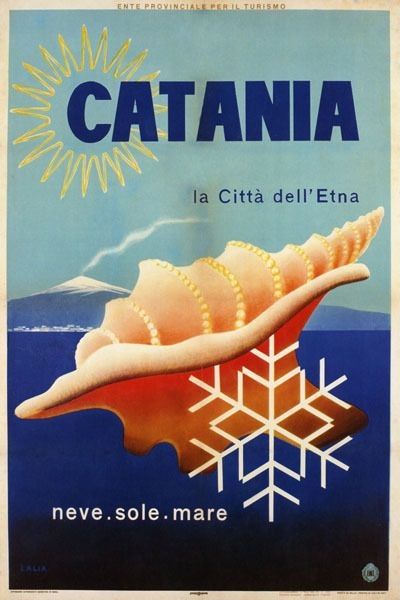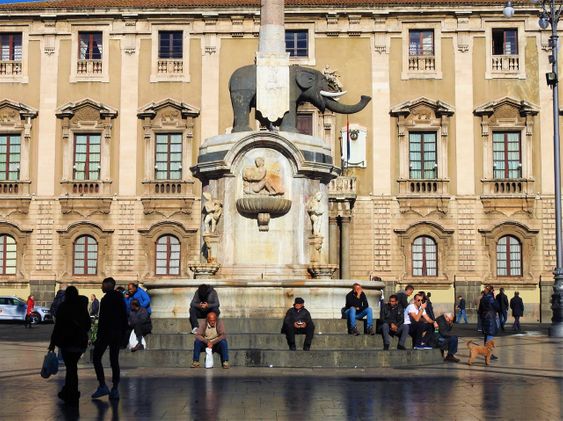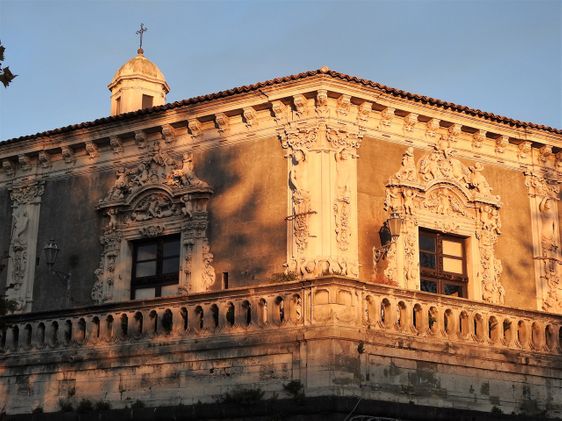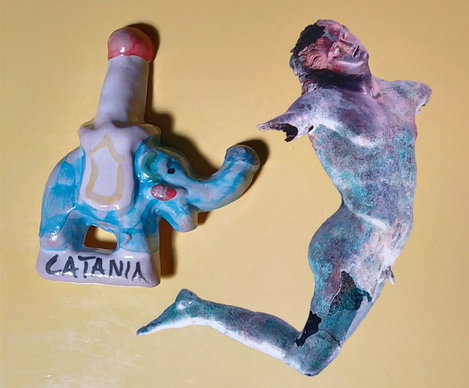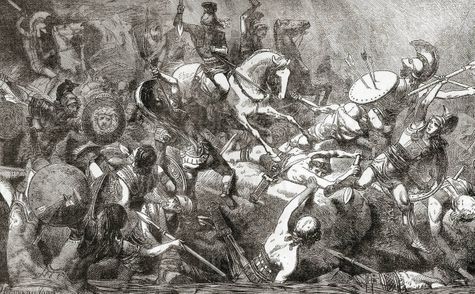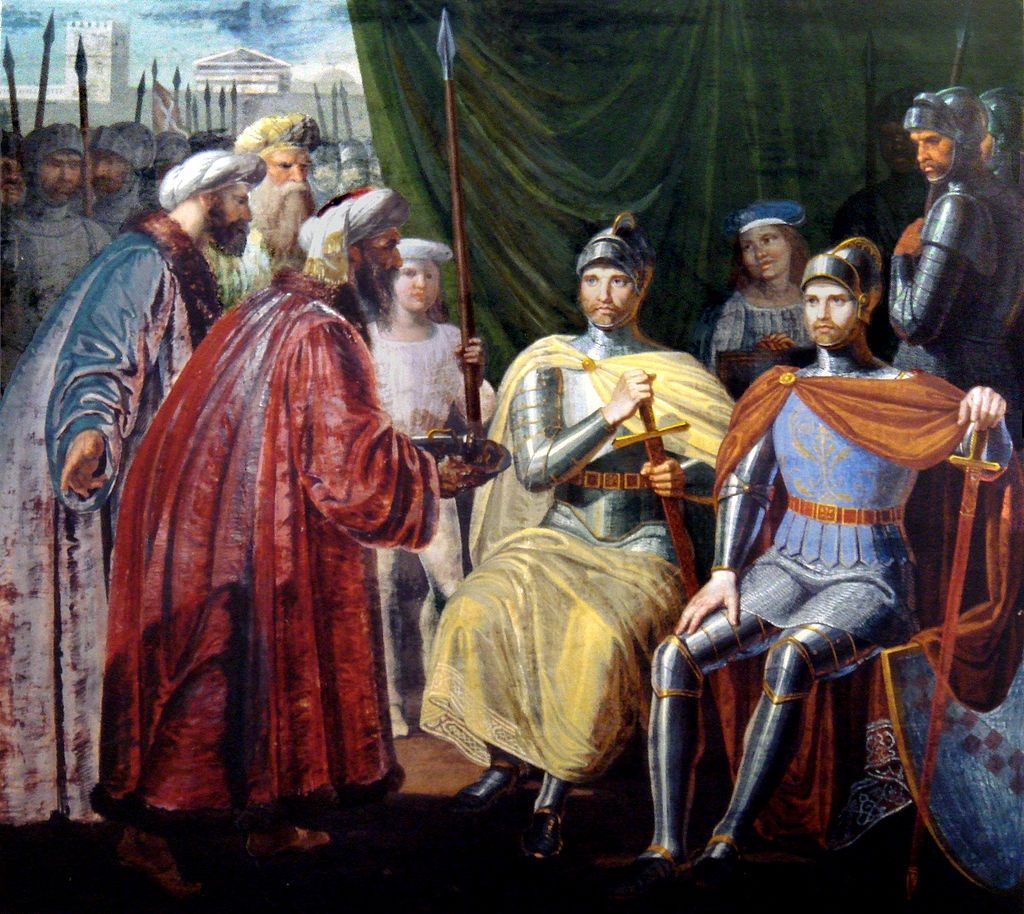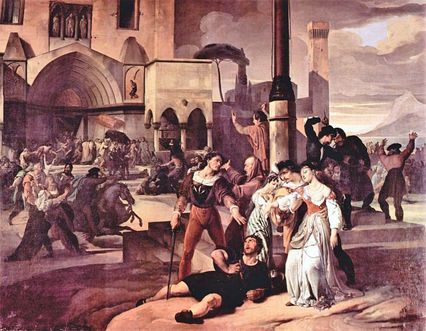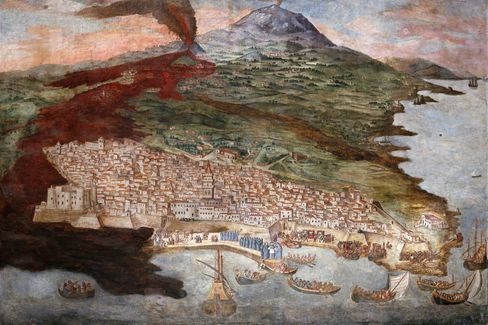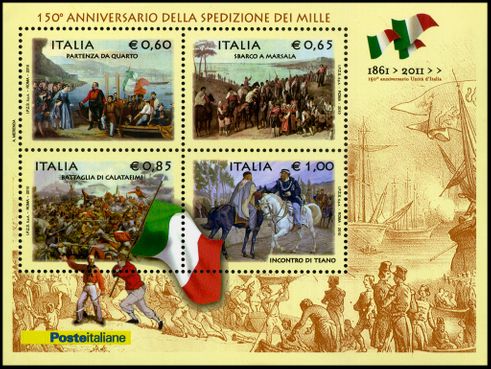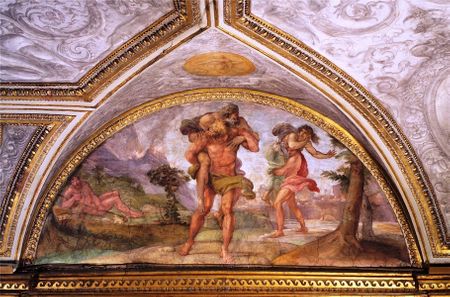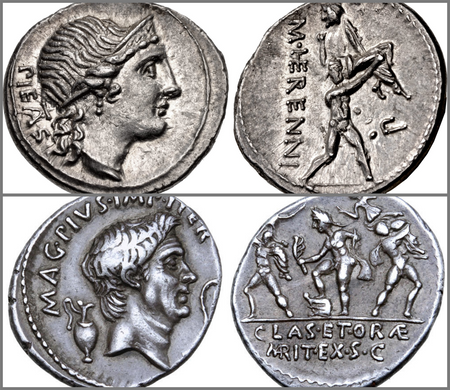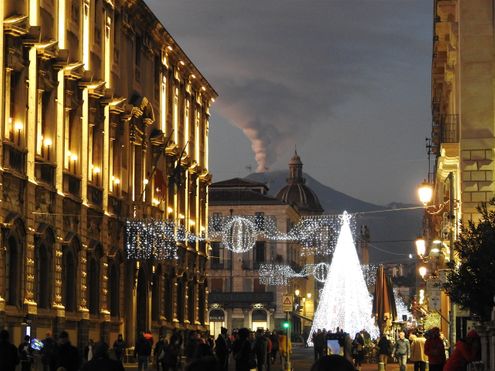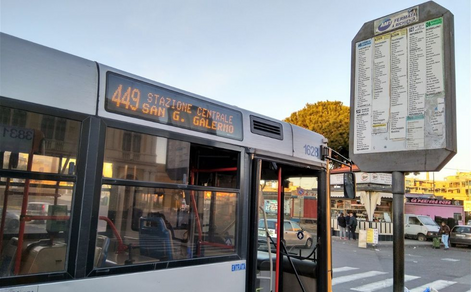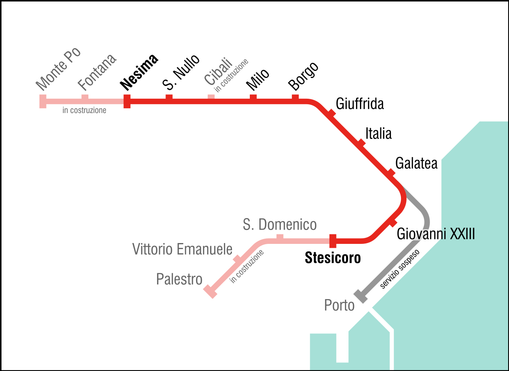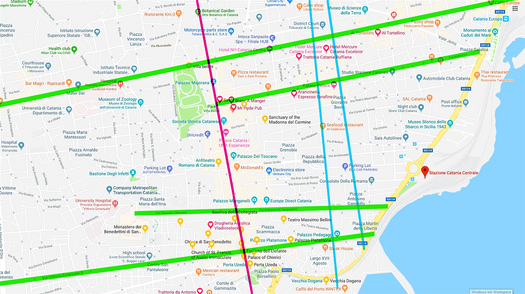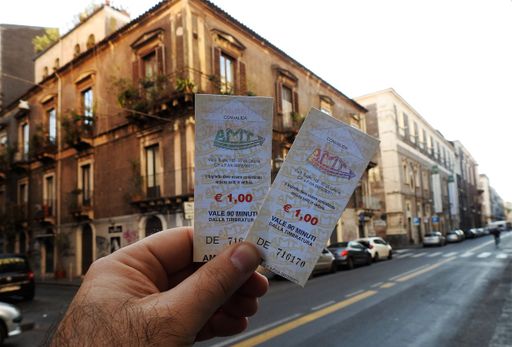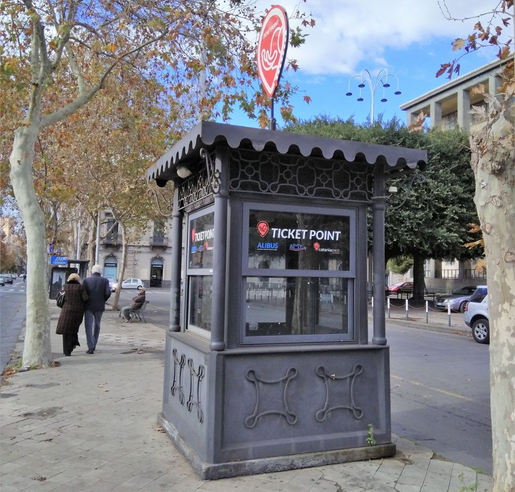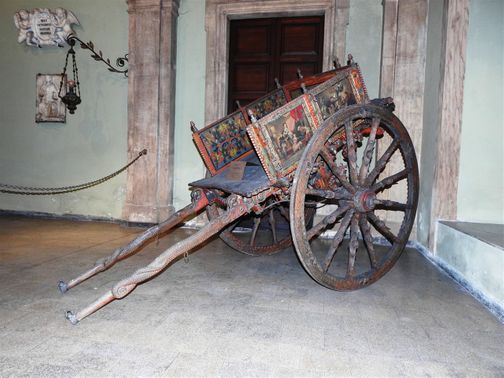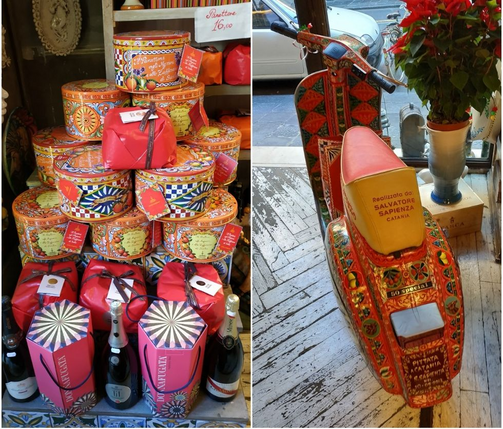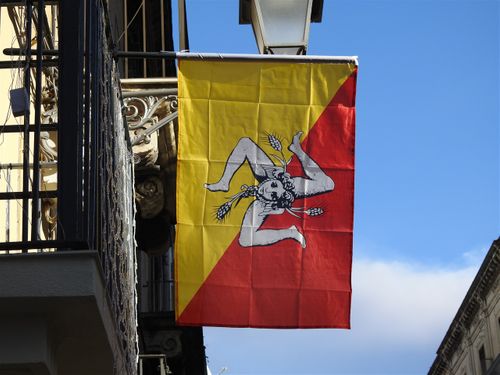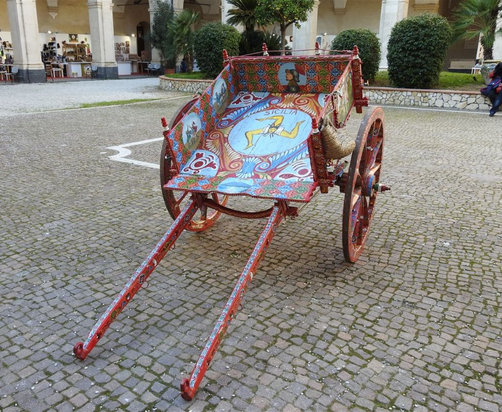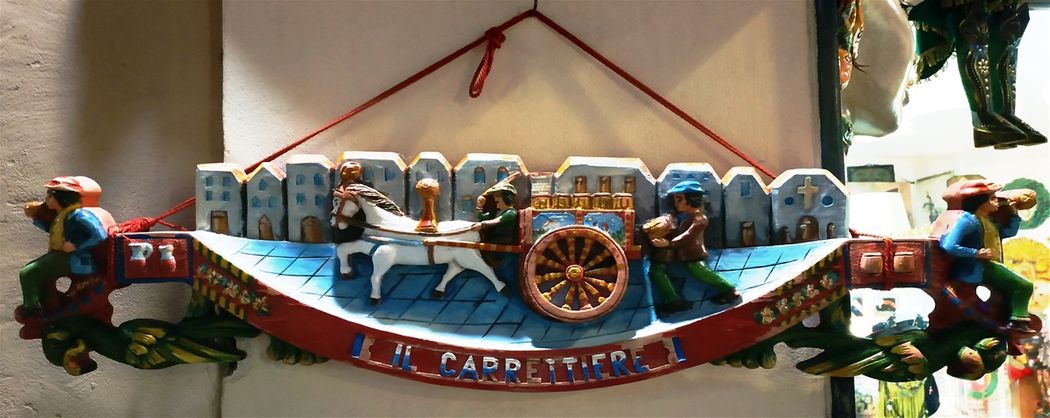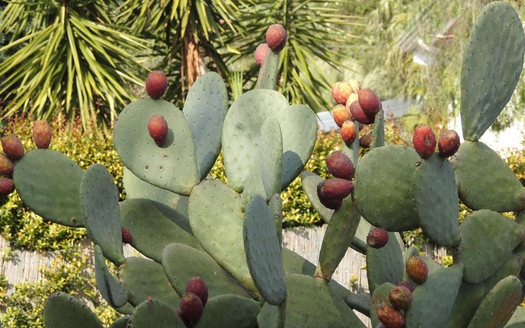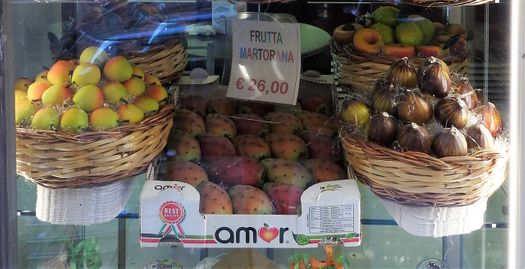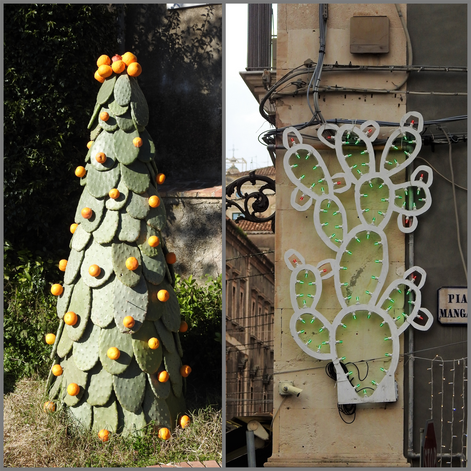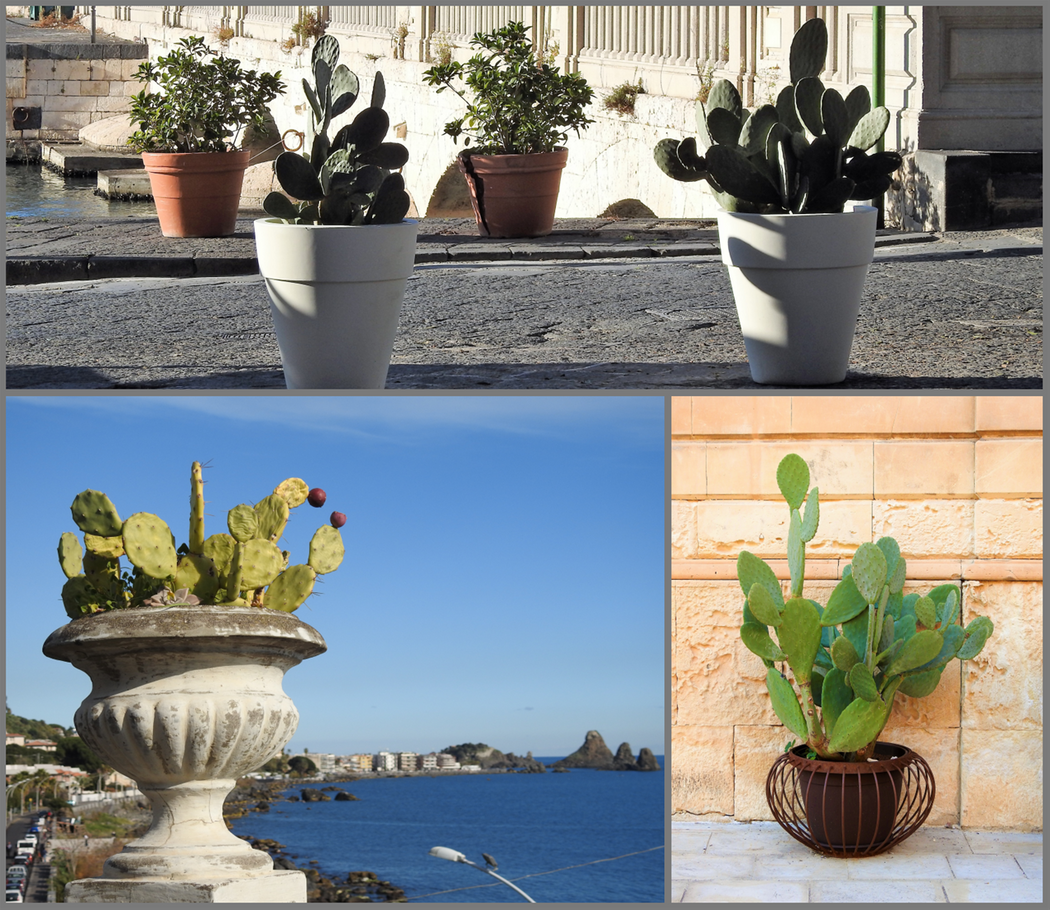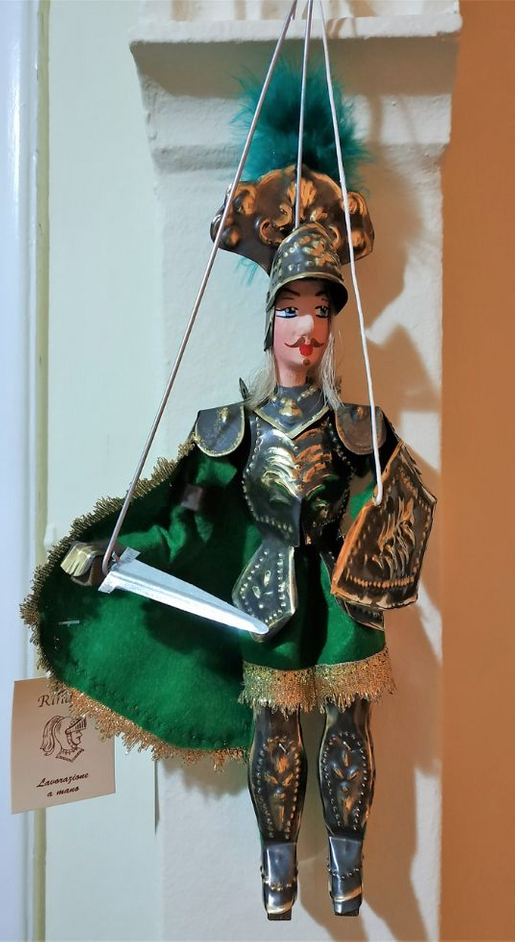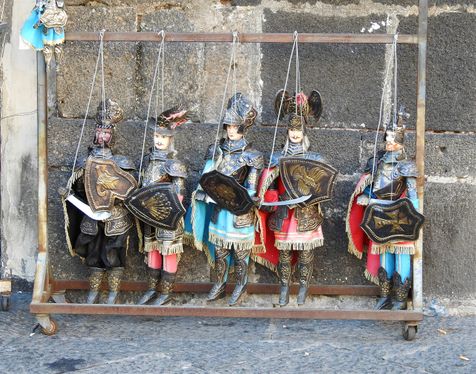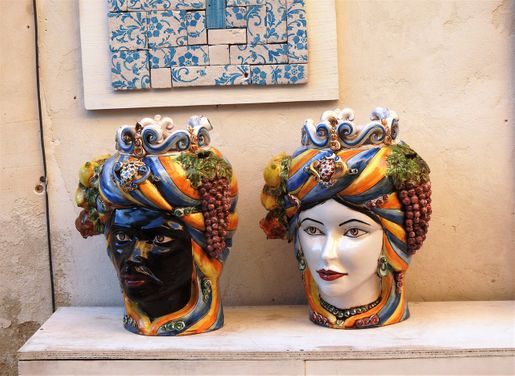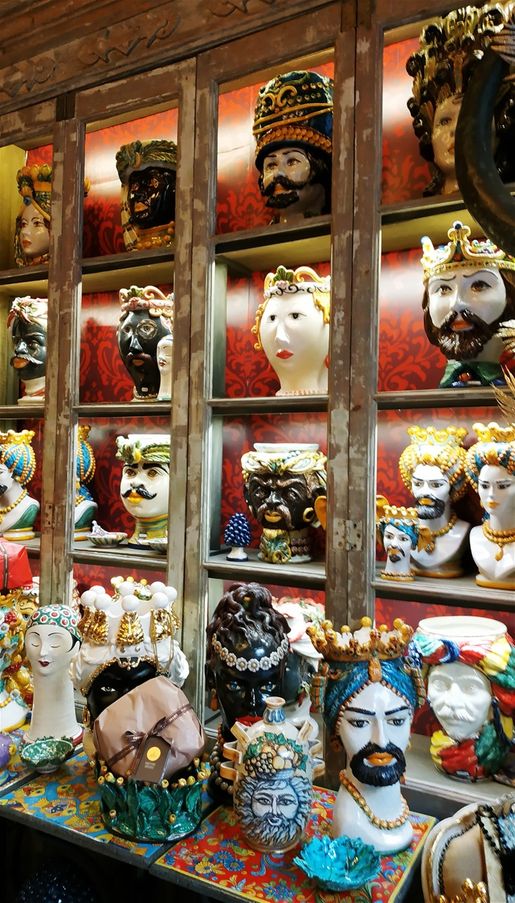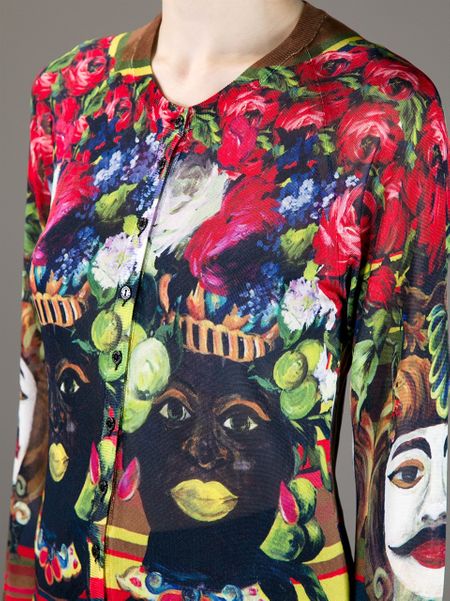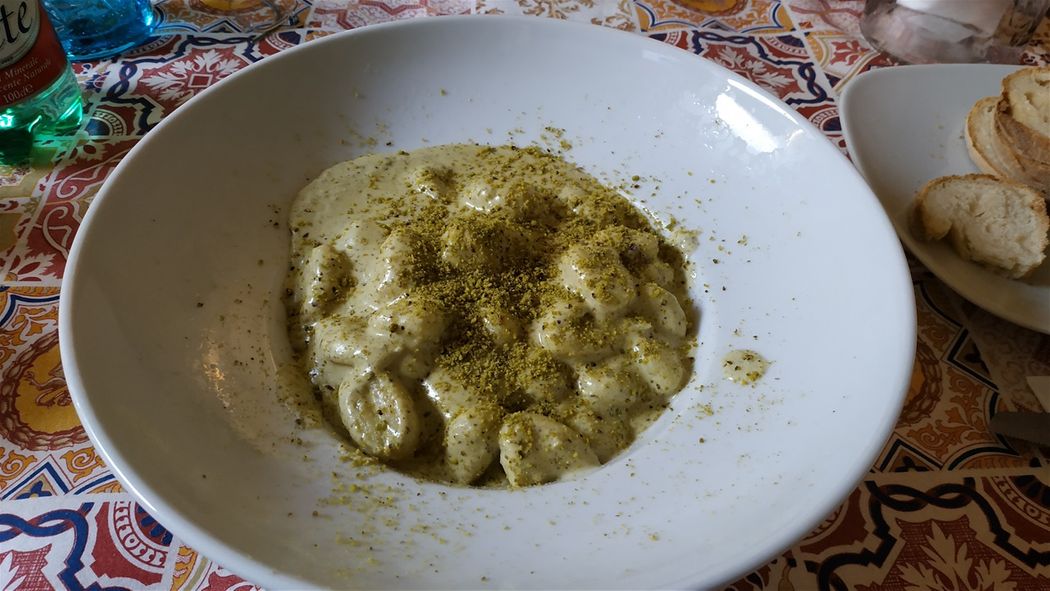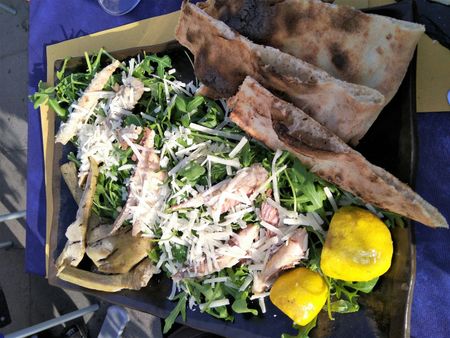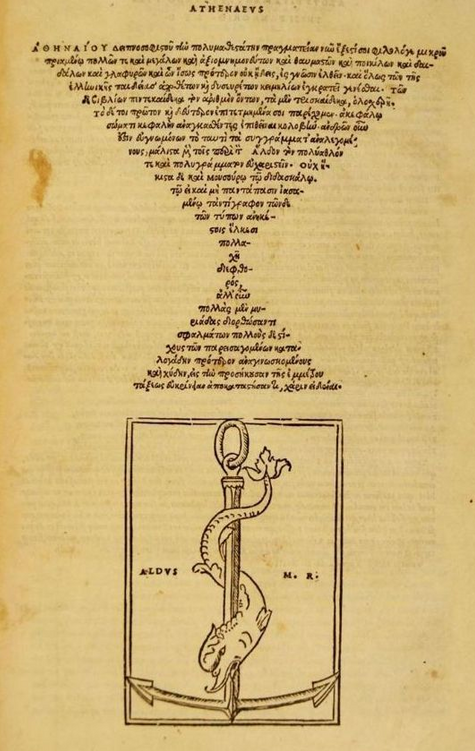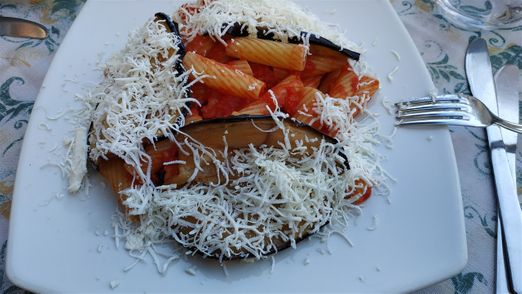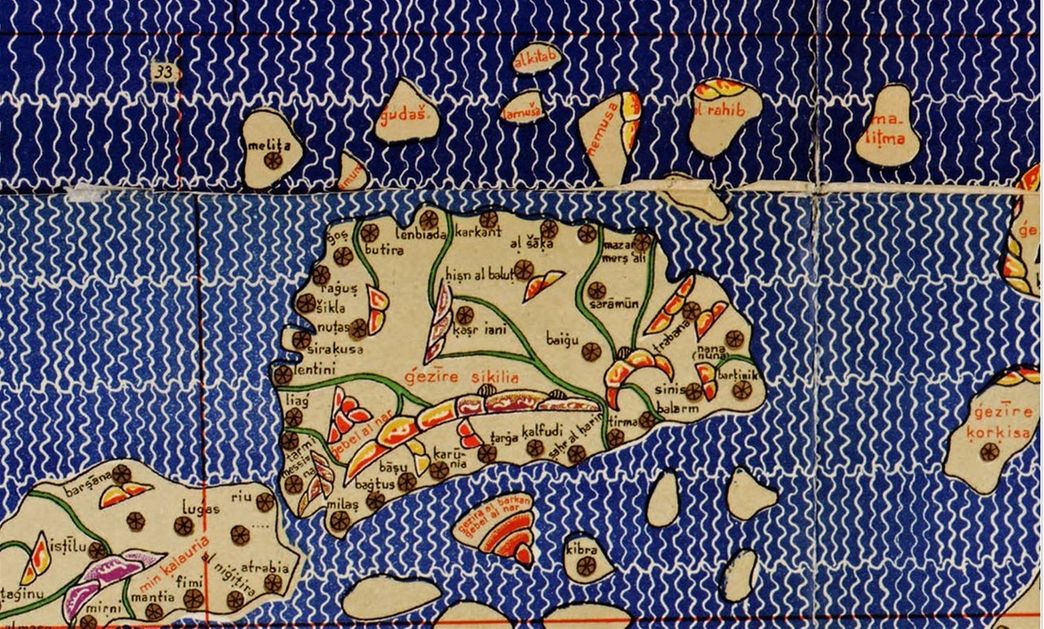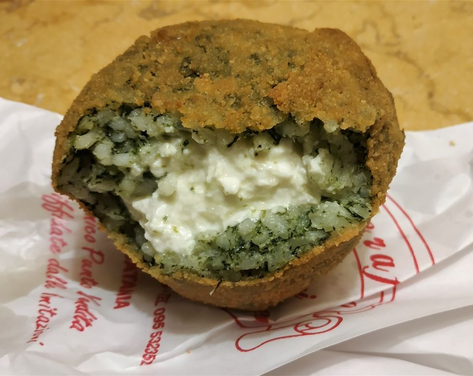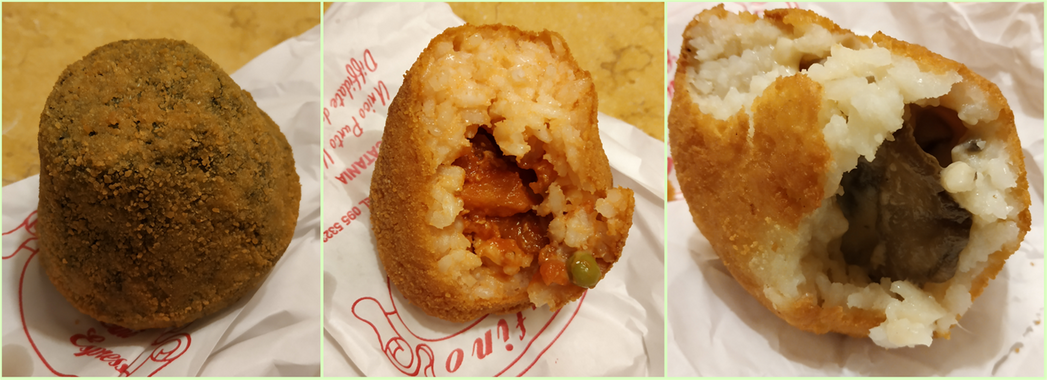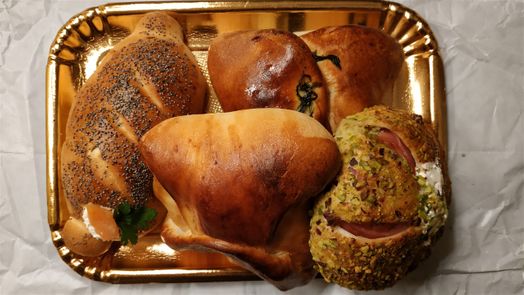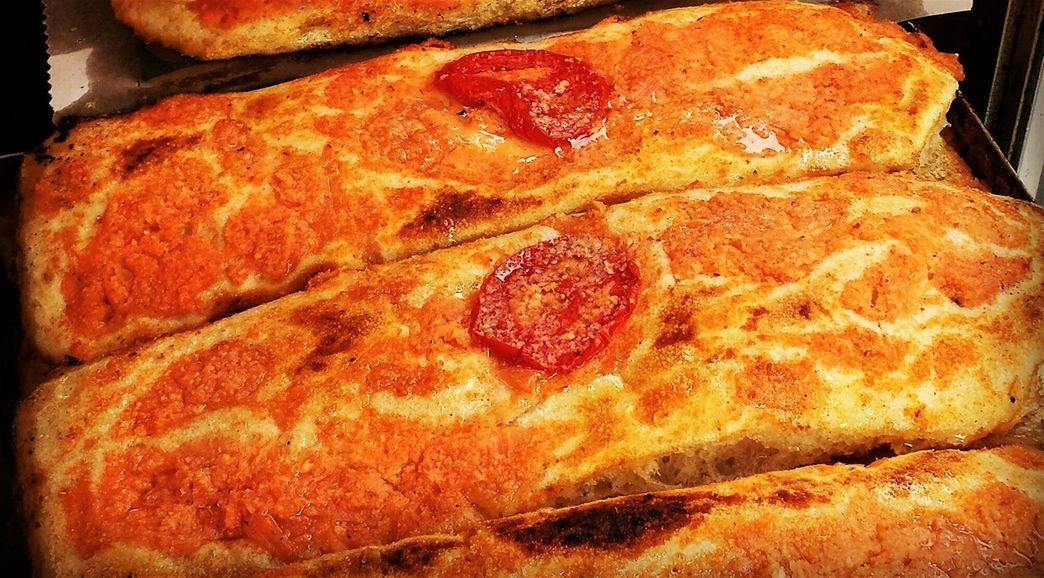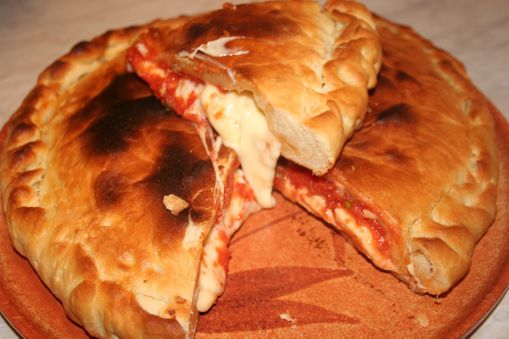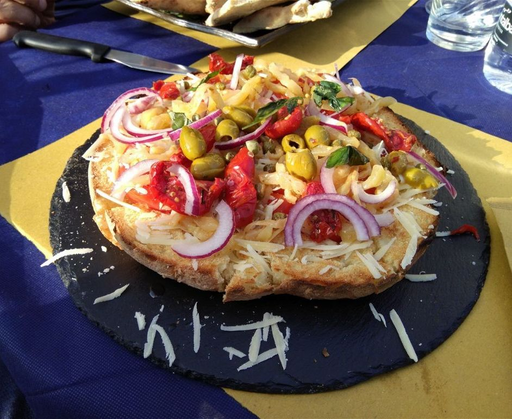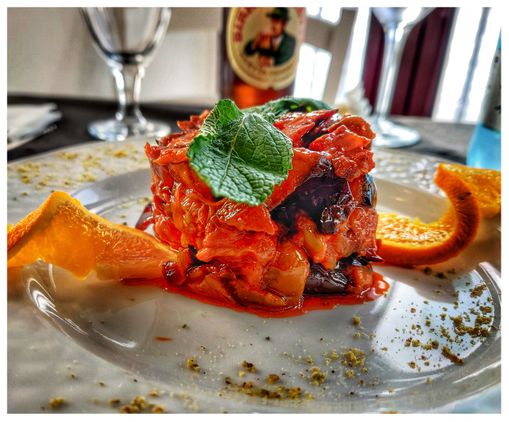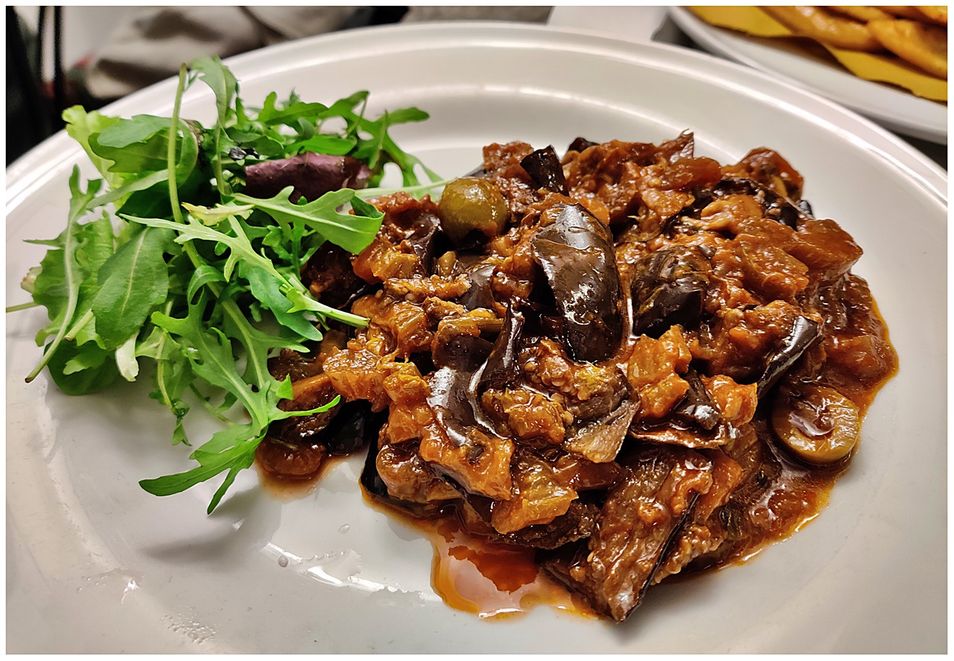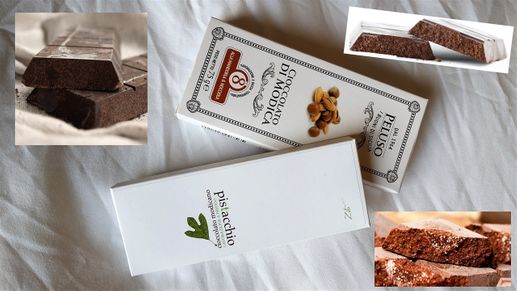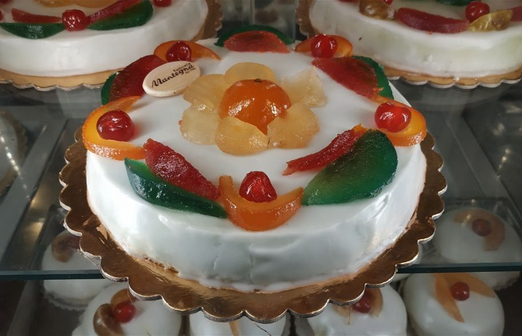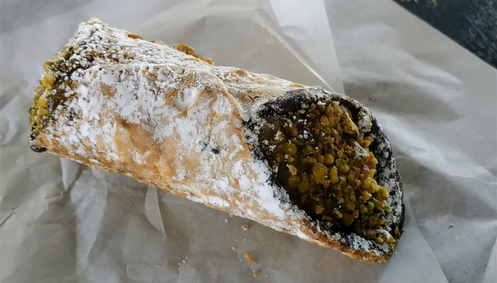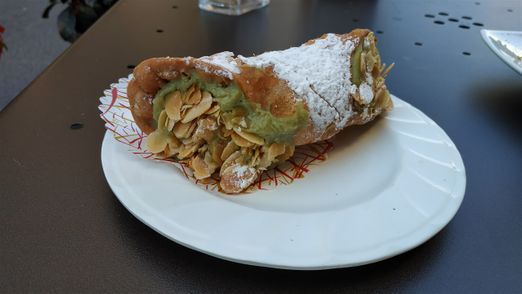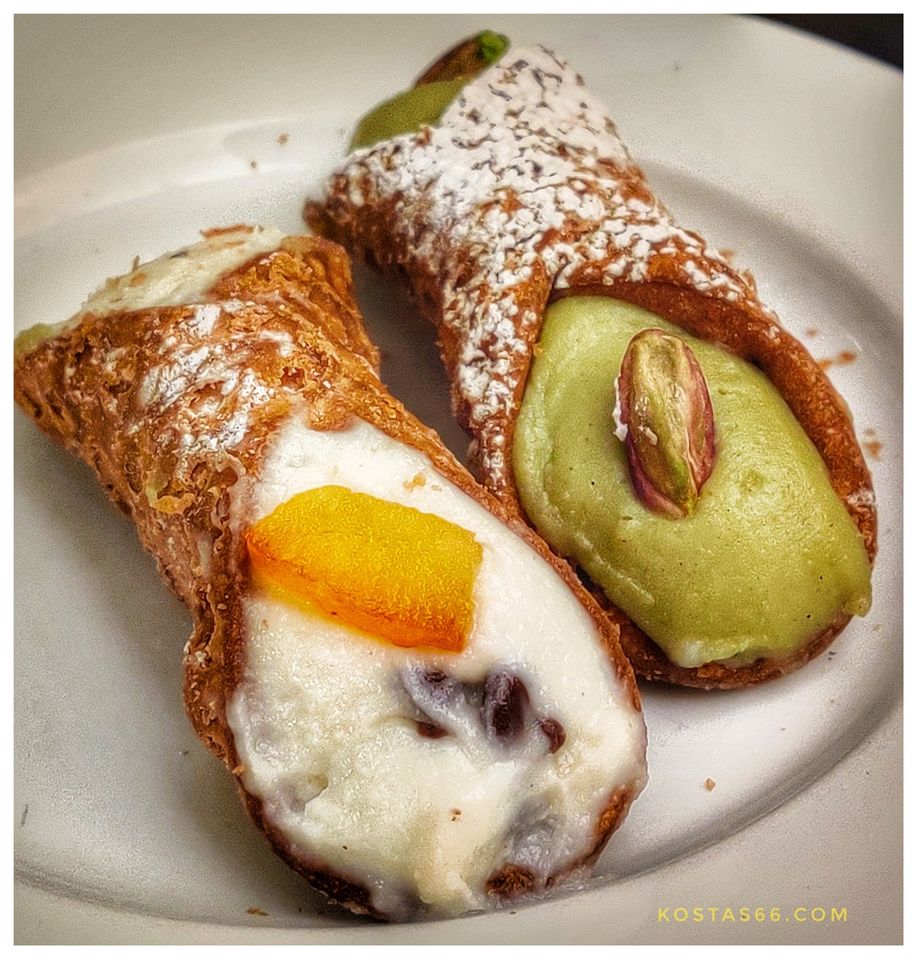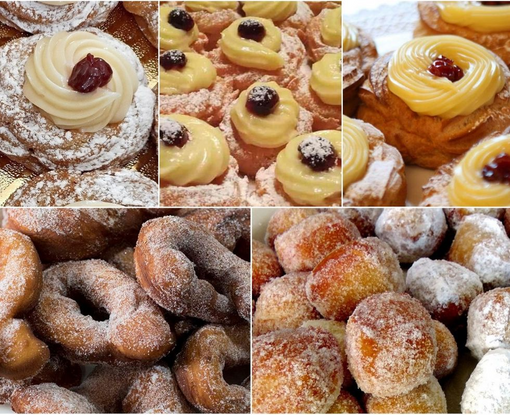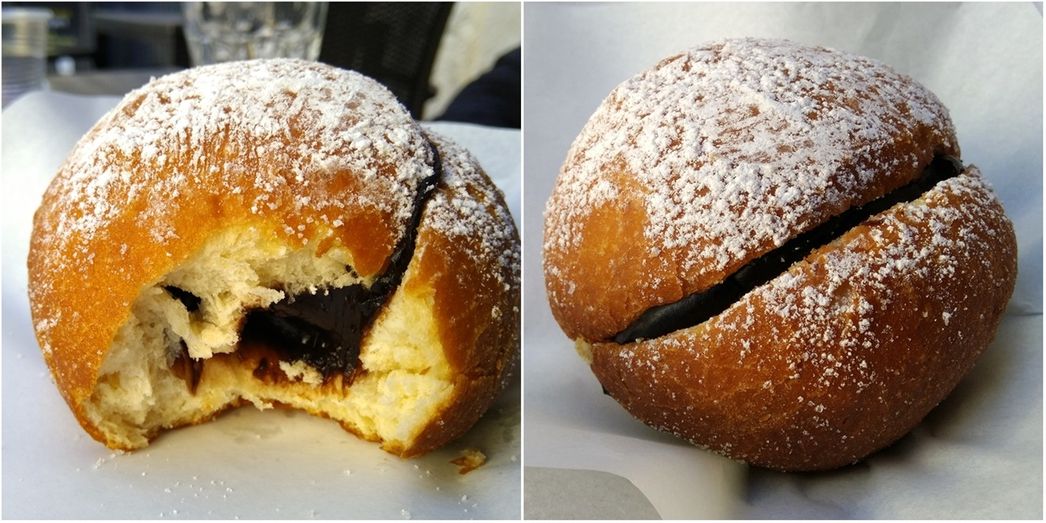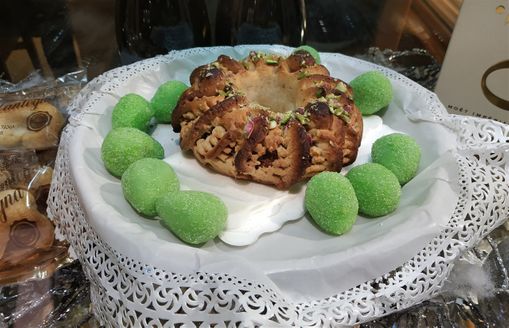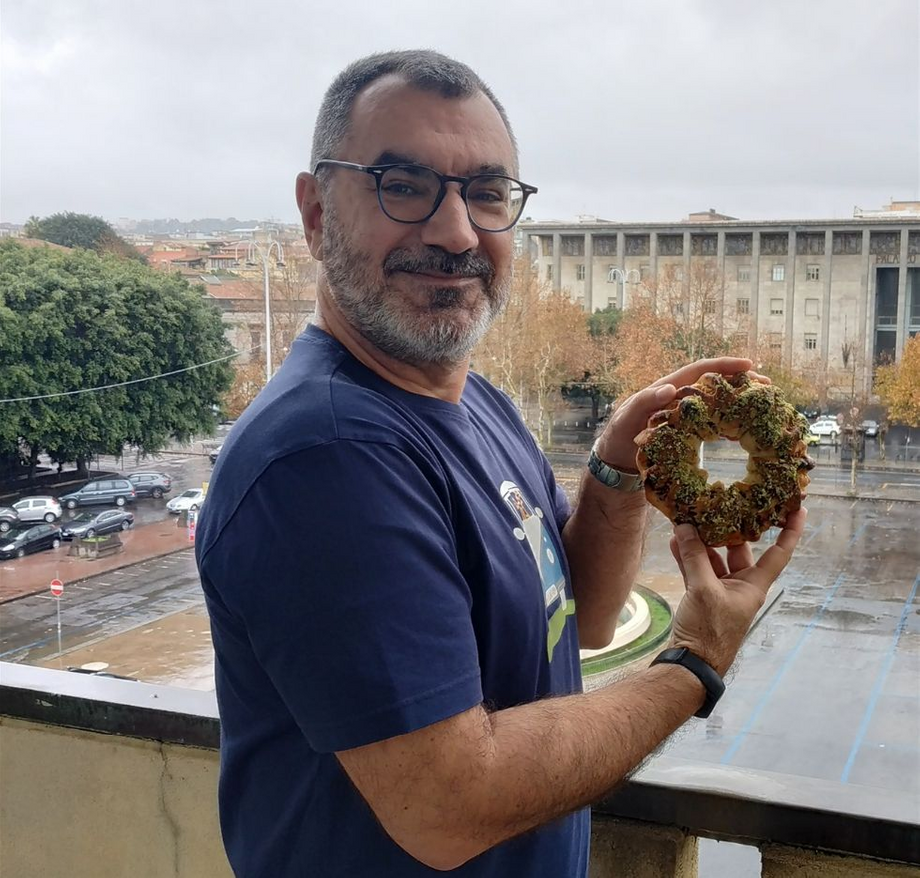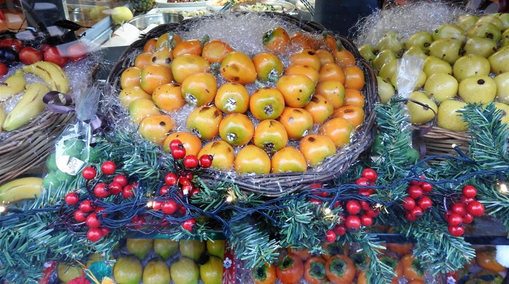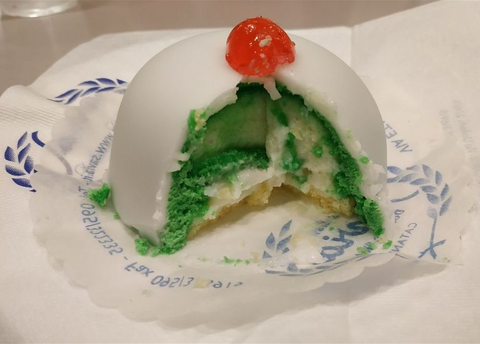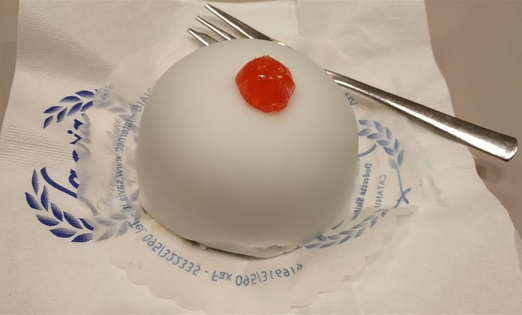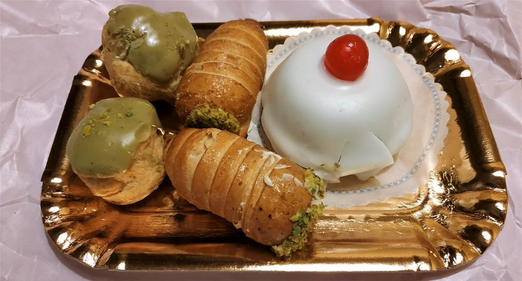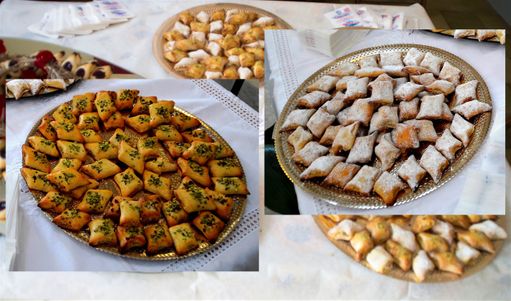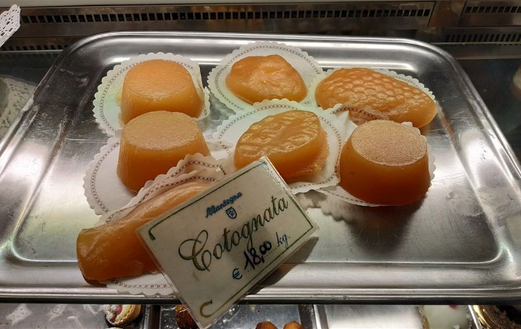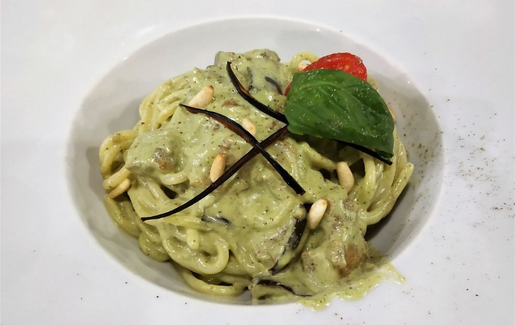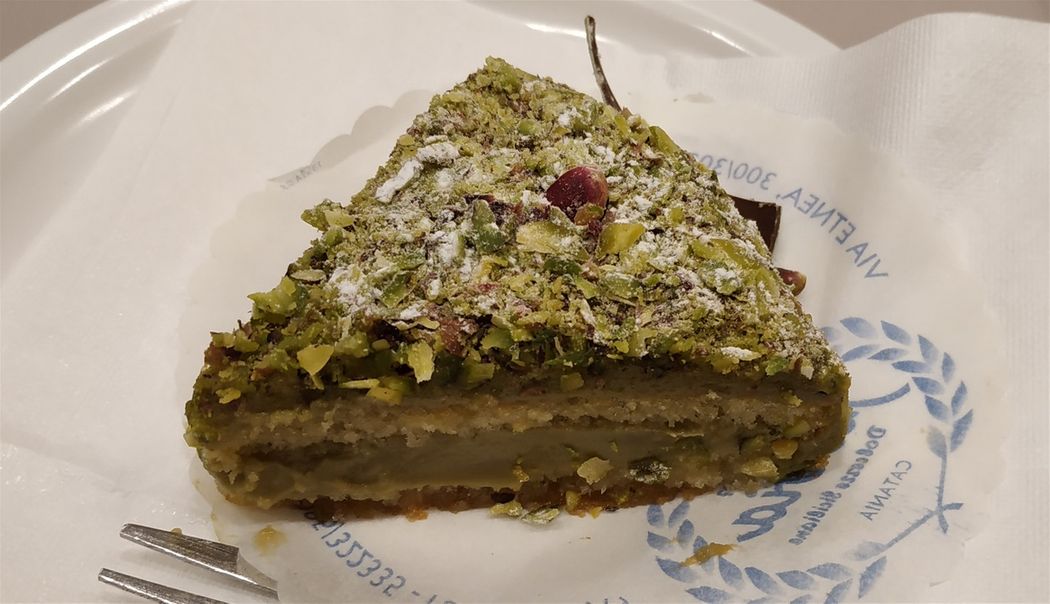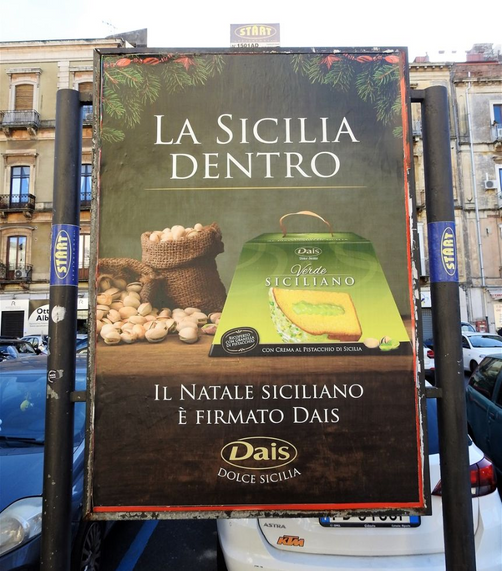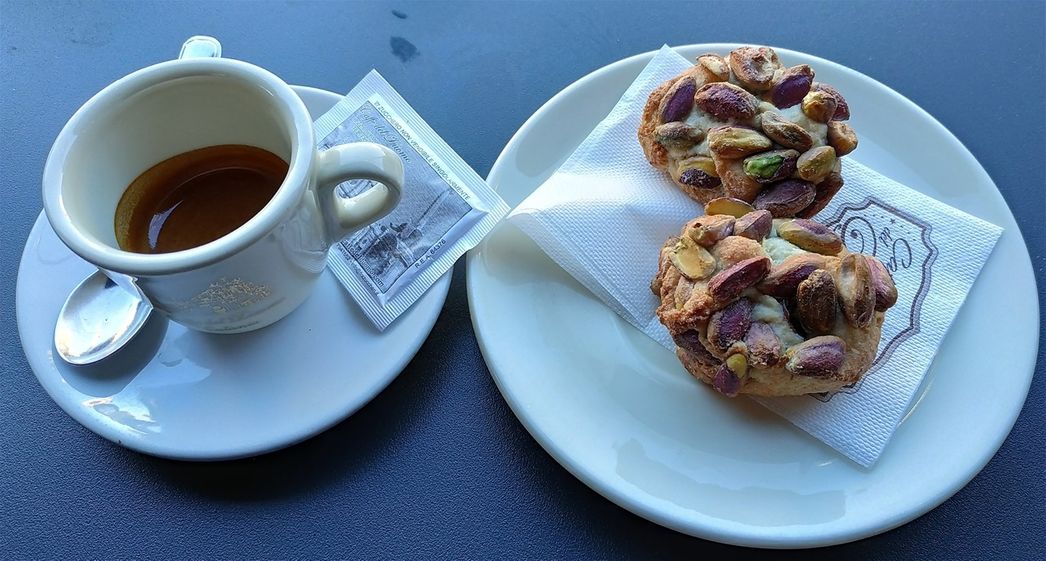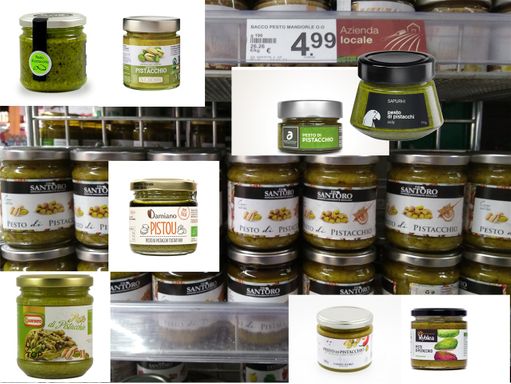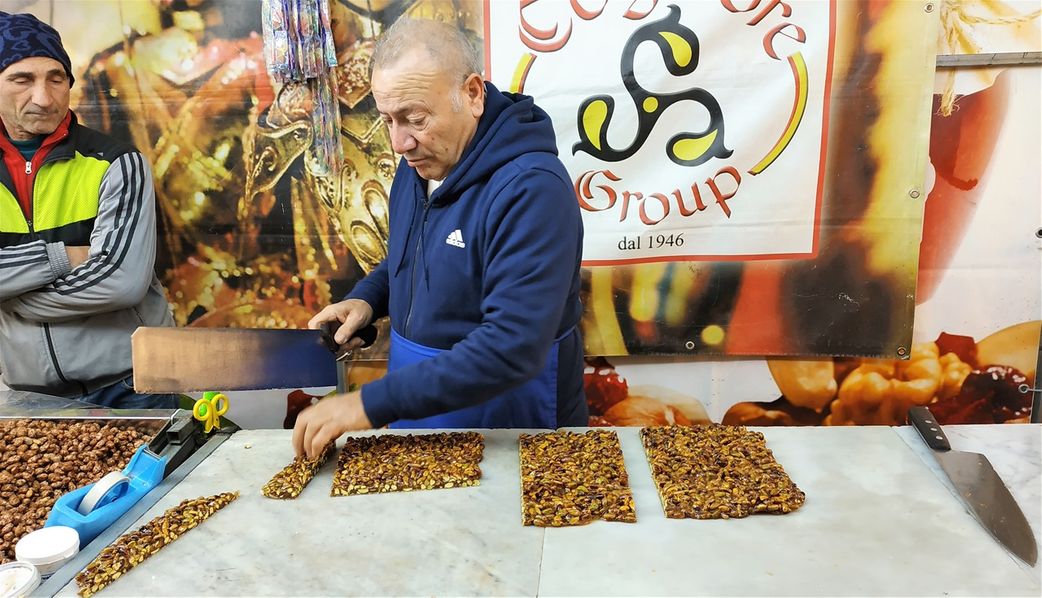CATANIA
The beauty under the mighty volcano
PART I
December 2018
Prologue
As observed by Strabo, the location of Catania at the foot of Mount Etna has been both a curse and a blessing. On the one hand, violent outbursts of the volcano throughout history have destroyed large parts of the city, whilst on the other hand, the volcanic ashes yield fertile soil, especially suited for the growth of vines.
The land's fertility is certainly what strikes the visitor when he sets foot on the area: citruses, olive trees, vines, and above all, my beloved Sicilian pistachio grow in abundance in huge organized orchards but also scattered here and there among prickly pear cacti. Cacti and their fruit are some of the icons of Sicily.
The ancient indigenous population of the Sicels named their village Katane, which means "rugged or rough soil."
The Greeks who settled here in the 8th century BC called their prosperous-to-be city Katánē, which is the name that has survived till today, though the Arabs, when Catania was part of the Emirate of Sicily, called it "The City of the Elephant." The elephant is the symbol of Catania even today because of the lava sculptured elephant over the fountain in Piazza Duomo, a talisman that was reputedly powerful enough to protect the city from enemies and keep away misfortune, plagues, or natural calamities.
The fountain of the elephant in Piazza Duomo.
The elephant is the symbol of Catania and the visitor can find here an endless collection of elephant souvenirs.
The city's architecture is glorious, impressive, and homogeneous. It was rebuilt in the Baroque style (Sicilian Baroque) after the city was destroyed in 1693 by a heavy earthquake and its aftershocks. The elephant charm did not save the city this time as it did in 1669 when its surroundings suffered great material damage from Mount Etna's eruption. Still, the city was essentially protected by its walls that diverted most of the lava into the port.
Sicilian Baroque.
The city of Catania, engraving from Civitates Orbis Terrarum by Georg Braun (1541-1622) and Franz Hogenberg (1540-1590), active in Cologne.
History Highlights
• Catania was founded as a Greek colony named Κατάνη (Katánē), of Chalcidic origin, under the guidance of a leader named Euarchos, in the 8th century BC.
• The 5th century BC was a period of great prosperity for Catania and the Sicilian cities in general. This ended with the great Athenian expedition to Sicily (part of the larger Peloponnesian War), when their allies, the Athenians, invaded the city. Catania became the headquarters of the Athenian armament throughout the first year of the expedition, and the base of their subsequent operations against Syracuse
• Catania had the misfortune of being on the losers' side after the defeat of the Athenians. As winners and undisputed masters of Sicily, the Syracusans, in 403 BC, plundered the city and sold its citizens as slaves.
The Sicilian Expedition
The Sicilian Expedition was an Athenian military expedition to Sicily, which took place (415–413 BC) during the Peloponnesian War between the Athenian empire on one side and Sparta, Syracuse, and Corinth on the other. The expedition ended in a devastating defeat of the Athenian forces, and the effects of the defeat were immense. Two hundred ships and thousands of soldiers were lost in a single stroke.
The city's enemies were encouraged to act, and rebellions broke out in the Aegean among Athenian allies. The defeat proved to be the turning point in the Peloponnesian War, though Athens struggled on for another decade. Thucydides observed that contemporary Greeks were shocked not that Athens eventually fell after the defeat but rather that it fought on for as long as it did, so devastating were the losses suffered.
The destruction of the Athenian army in Sicily during the Sicilian Expedition, an Athenian military expedition to Sicily, which took place during the Peloponnesian War. (Picture from Ward and Lock's Illustrated History of the World, published c.1882).
• Τhe city fell into the hands of the Carthaginians in the early 4th century BC.
• In the First Punic War, Catania was one of the first among the cities of Sicily, which made their submission to the Roman Republic in 263 BC. The city rose to a position of great prosperity under Roman rule.
• Catania was sacked by the Vandals of Gaiseric in 440–441. After a period under the Ostrogoths, it was reconquered in 535 by the Eastern Roman Empire, under which it remained until the 9th century. It was the seat of the Byzantine governor of the island.
• Catania was under the Islamic Emirate of Sicily from 831 until 1072, when it fell to the Normans of Roger I of Sicily.
"Roger I of Sicily receiving the keys of Palermo", by Giuseppe Patania.
• Catania was one of the leading centers of the Sicilian Vespers revolt (1282) against the House of Anjou and was the seat of the coronation of the new Aragonese king of Sicily Peter I.
Vespri siciliani
The Sicilian Vespers (Vespri siciliani) was a successful rebellion on Sicily that broke out at Easter of 1282 against the rule of the French-born King Charles I, who had ruled the Kingdom of Sicily since 1266. Within six weeks, three thousand French men and women were slain by the rebels, and the government of King Charles lost control of the island. It was the beginning of the War of the Sicilian Vespers, which ended in 1302 with the Peace of Caltabellotta.
Sicilian Vespers (1846), by Francesco Hayez.
The war resulted in the division of the old Kingdom of Sicily; Charles II was confirmed as king of the peninsular territories of Sicily (the Kingdom of Naples), while Frederick III was confirmed as king of the island territories (the Kingdom of Trinacria).
• In 1434, King Alfonso V founded here the Siciliae Studium Generale, the oldest university on the island.
• With the unification of Castile and Aragon (early 16th century), Sicily became part of the Spanish Empire. It rebelled against the foreign government in 1516 and 1647.
• In 1669, the city's surroundings suffered great material damage from a massive eruption of Mount Etna. The city itself was essentially saved by its walls that diverted most of the lava into the port.
Afterward, in 1693, the city was then completely destroyed by a heavy earthquake and its aftershocks. The city was then rebuilt in the Sicilian Baroque architecture that nowadays characterizes it.
• Catania was one of the vanguards of the movement for Sicilian autonomy in the early 19th century.
• In 1860, Giuseppe Garibaldi's "Expedition of the Thousand" conquered Sicily for Piedmont from the Kingdom of the Two Sicilies. Since the following year, Catania was part of the newly unified Italy, whose history it shares since then.
• After heavy fighting across eastern Sicily, Catania was eventually captured by the British 8th Army on 5 August 1943.
Italy 2010 stamps "150° Anniversario della spedizione dei Mille" (150th Anniversary of the "Expedition of the Thousand").
The 1669 Etna eruption.
Amphinomus and Anapias
Few associations connected with Catania were more celebrated in ancient times than the Legend of the Pii Fratres (Fratres Catanenses), Amphinomus and Anapias (Ἀμφίνομος & Ἀναπίας) ), who, on the occasion of a great eruption of Etna, abandoned all their property, and carried off their aged parents on their shoulders. The Gods were so moved about this action and made the stream of lava itself to have parted and flowed aside so as not to harm them.
Statues were erected to their honor, and the place of their burial was known as the Campus Piorum; the Catanaeans even introduced the figures of the youths on their coins, and the legend became a favorite subject of allusion and declamation among the Latin poets, of whom the younger Lucilius and Claudian have dwelt upon it at considerable length. Hyginus refers to the occurrence of the first eruption of Etna that took place after the settlement of Catania.
Roman coins depicting Pii Fratres. 108-107 BC (top) & 42-40 BC (bottom).
Pii Fratres fresco.
.
Via Etnea and Etna volcano smoking at the background.
Via Monsignor Ventimiglia & Via Francesco Crispi cross the city from north to south, connecting the port with the highways on the north. Corso Italia, Via Umberto I, Via Vittorio Emanuele II, and Via Antonino Di Sangiuliano connect the eastern coast to the inlands to the west. Via Etnea is the most important street in the city and connects all worth visiting attractions of the old part of the city. This miles-long legendary street provides the frame through which one has the best views of Mount Etna.
Moving around
AMT runs all buses in the city. A single ticket (valid for 90min allowing transfer to other lines) costs 1€, while the “giornaliero”, an unlimited day ticket, costs 2.5 €. Tickets in Catania can be found at any Tabacchi Shop (tobacconist) and have to be validated upon entrance on the bus. So, one can say, “great…so cheap!”. Yes, very cheap and convenient if there was not a big problem with public transportation: reliability.
Bus stop at Stazione Catania Centrale (Piazza Papa Giovanni XXIII).
Of course, I always advise fellow travelers to use the moovit site //moovitapp.com/ or their application made both for android and iPhone (iPhone? what crap is this? Who uses this?) smartphones. Νevertheless, even this is not good enough for Catania because the application is fed with the scheduled bus times, which may change for any possible and impossible reason.
Around the city, next to main bus stops, there are beautiful kiosks ("ticket points", they are called), which are supposed to be staffed with employees to help commuters and give them all the necessary information. Alas, all of them are empty! I do not know exactly what happened, but as I am Greek, I can imagine it is one of the many corruption and malfunction examples of the public sector.
But, let's not be very fussy: Catania is a small city, and almost everything can be reached on foot. Get some good shoes on, and there you go…
Map of Metropolitana di Catania only line.
Orientation
Catania lives under the shadow of Mount Etna. Wherever you are in the city, it is impossible not to see the mighty silhouette of the volcano in the background (looking towards the north).
Located on the coast, halfway between the cities of Messina and Syracuse, Catania is the most populous and important city on the eastern part of the island and second only to Palermo in the whole island of Sicily.
Via Monsignor Ventimiglia & Via Francesco (North-South/blue lines). Corso Italia, Via Umberto I, Via Vittorio Emanuele II & Via Antonino Di Sangiuliano (west-east/green lines). Via Etnea (red line).
The International airport of Catania (Aeroporto di Catania-Fontanarossa), located just 5-6 km to the south, is the main entrance to eastern Sicily.
"ALIBUS," run by AMT (AMT), is the primary means and the cheapest to go from the airport to the city. The line serves 15 stops. You can buy the ticket, which costs 4 €, at the airport or on board the bus and for the next 90 min you can be transferred to any other urban means of transportation.
Taxis are available at the airport, and for 20-25€ you can go anywhere in the city.
AMT single tickets.
Buses are not trustworthy at all, and you may end up waiting for a whole day for your next bus.
There are passenger information systems at most bus stops, "the Sicilian way": they do not announce all buses, or they announce a bus that never comes, as it gets lost in a time-travel wormhole!
"Ticket point", outside Tribunale di Catania (Piazza Verga).
In the late 1990s, the first line of an underground railway (Metropolitana di Catania) was built. The underground service started in 1999. It is currently active on a route of 8.8 km: it begins at Nesima station (West of town), passes through 8 stations, and terminates to Stesicoro station. The existence of a metro line is useless for the visitor…so forget its existence…besides, even locals have forgotten the metro line, which does not operate on Sundays and holidays!!!
Choosing to drive in town means you will have to deal with the city's complicated one-way system and the massive traffic jams. It seems that people here do not know what walking is. It makes you wonder what's the pleasure all these people get from being stuck in their car for hours with their wife, children, parents, and in-laws, who move and shout (talk?) the Sicilian way!
Parking is extremely difficult in the city Centre. And… if this is not enough people here have the habit to park for a “short” period of time (I do not know how short is “short”) in small places (not big enough for a full parking, or in front of entryways, or at parking-prohibited spots) in a peculiar way which completely closes traffic in the street: the car faces the pavement and its long axis forms a 45ο angle with the pavement.
Catania is the only city I have been to, where you almost see no taxis in the streets: I mean taxis that have a taxi sign somewhere visible on them. So, there is no way to hail a taxi in the street. Taxi ranks are also tough to find: there is one at the train station and one at Piazza del Duomo. So, you better have always available the telephone number of a radio taxi to call when in need.
How to park at a non-parking spot the Catanese way!
That's all Sicilian to me!
The triskelion of Sicily
Pliny, the Elder, attributes the origin of the triskelion of Sicily to the triangular form of the island, the ancient Trinacria (from the Greek tri- (three) and akra (end, limb)), which consists of three large capes equidistant from each other, pointing in their respective directions, the names of which were Pelorus, Pachynus, and Lilybæum. (Νote: the words trinacria and triskelion are synonyms).
The triskelion painted on a Carretto siciliano.
According to another notion, the three limbs refer to the historical three 'valli' of the island, the three different administrative regions the island was divided into during the Muslim rule on Sicily: the Val di Noto in the southeast, the Val Demone in the northeast, and the Val di Mazara in the west. The ancient symbol of Trinacria is the head of Medusa (a gorgon with a head of snakes) overlaying three legs conjoined at the hips and flexed in a triangle and three stalks of wheat.
The flag of Sicily bearing the triskelion was first adopted in 1282, after the successful Sicilian Vespers revolt against King Charles I of Sicily. The triskelion came to be on the Sicilian flag in 1943 during World War II when Andrea Finocchiaro Aprile led an independence movement in collaboration with the allies. They planned to help Sicily become independent and form a free republic. The separatist behind the campaign used a yellow and red flag with the Trinacria in its center.
When World War II ended, Sicily was recognized as an autonomous region in the Italian Republic. The Trinacria symbol has also been adopted by the modern Sicilian government (2000) and appears at the center of Sicily's flag. The red color on the Sicilian flag represents Palermo, while the yellow represents Corleone. Palermo and Corleone were the first two cities to found a confederation against the Angevin rule.
Carretto siciliano
One of the best-known symbols of Sicilian folk iconography, the cart (carretto siciliano) was created as a means of transport that responded to practical needs but went on to be transformed into a vehicle for cultural transmission. Sculpture and painting were applied to its constituent parts to represent moments from the island’s history or epic stories or popular religion, creating valuable constructions that were genuine traveling works of art.
Carretto siciliano in the Palazzo Degli Elefanti.
Carts are covered in carvings, brightly painted scenes from Sicilian history and folklore, and intricate geometrical designs. These scenes also served the purpose of conveying historical information to those who were illiterate. The colors of Sicily's flag, yellow and red, feature prominently on the carts, along with details in bright blues and greens. The animals pulling the carts are often elaborately adorned as well.
"Carretto siciliano" products. Dolce & Gabbana panettone (left) and a vespa (right).
The flag of Sicily.
Carretto siciliano.
The Carretto Siciliano is made in several provinces in Sicily, each with its style. Carretti made in the province of Palermo have more of a square box design, those made in Catania are made with more elaborate 'keys', and then there are the carts made in Agrigento, which have their distinctive style. The craft of making the carts is handed down from generation to generation through the training of apprentices.
Carretto siciliano -1965.
Miniature carts, or Carrettini Siciliani, are often sold in Sicily (or in Italian shops and restaurants in other parts of the country) as souvenirs.
Today, similar, distinctive Sicilian painting is used on cars, vespas, product packages, etc. For example, the brand Dolce & Gabbana uses this kind of decoration on many products: household appliances (i.e., Smeg “Sicily is my love” collection), food packaging, tin boxes (i.e., for the iconic Fiasconaro panettone), etc.
Carretto siciliano souvenir.
Prickly pear
Anyone who has visited Sicily cannot have failed to notice the island’s ubiquitous prickly pears (fico d’India). They flank roads, divide fields, thrive on lava flows, cling to cliffsides, grace private gardens and terraces, and provide inspiration for potters and artists.
It seems that Sicilians adore this plant and its fruit, and they even make Christmas trees out of them. The prickly pears are grown in huge sizes, and their fruit comes in three primary colors – apple white, ruby red, and sunset orange. Νot surprising that they are used as decorative plants extensively.
Prickly pears in a garden in Aci Trezza.
Marzipan prickly pears (frutta martorana).
Prickly pear leaves made to a Christmas tree in Syracuse (left). A Christmas decoration in Catania (right).
It is this fruit the Sicilians place at the top of the island's extended fruit list. The flesh is juicy and sweet and contains many seeds, which the locals devour without a thought. Besides, their nutritional value is vital. Excess fichi d'India are transformed into preserves, juices, condiments, liquors, and even skincare products – the essential oils of the fruit's seeds being highly prized.
The plants flower in the summer. By mid-September, the fruits begin to appear in the markets and on improvised street corner stalls manned by vendors who expertly peel off the thorny skin so that their customers may indulge immediately. The locals call the fruits “bastardoni” (big bastards).
Prickly pears, as decorative plants, are everywhere.
Opera dei Pupi
Opera dei Pupi (opera of the puppets; more appropriately, "marionette theatre"), as well as the Sicilian tradition of cantastorîas (singers of tales), are rooted in the Provençal troubadour tradition in Sicily during the reign of Frederick II, Holy Roman Emperor, in the first half of the 13th century. Sicilian "marionette theatre" developed into its present form in the eighteenth century and still is considered an essential part of Sicilian folk culture.
Typically, the marionettes and their theatre depict medieval characters and legendary events based loosely on history. As folk art, the productions generally are expressions of the popular perception of personages and events rather than faithful chronicles of history and literature. That was always the idea of this kind of entertainment. It wasn't meant to be informative so much as inspirational, in the sense that spectators might in some way compare the stories or characters to their own lives.
A marionette souvenir.
The interest in marionette theatre faded with the emergence of modern developments in the early decades of the twentieth century and the "need" for the propagation of "national unity" by the Italian state, the Italian language instead of promoting stories presented in the Sicilian language lionizing the glory of the sovereign Kingdom of Sicily. Today, there is some revival of interest in this kind of "folklore" tradition, especially when tourism has "rediscovered" forgotten arts, crafts, and practices.
Catanese marionette.
The marionettes are made of wood and cloth with metal paraphernalia, like helmets, shields, and swords. Many marionette makers still work in Sicily, particularly in Palermo, Catania, and Messina, and sell their creations as souvenirs. Marionette making is a demanding field requiring numerous, highly-developed skills. Nobody is born a puppeteer; it is an art learned over many years. The puppets are carved, painted, and decorated. Sets are painted in the Sicilian folk style with traditional colors, using canvas for the backdrops. The marionettes of Palermo used in theatre are about 80 cm in height, while in Catania, they are considerably taller (around 120 cm). The various types of marionette used in southern Italy differ not only in size, which dictates the dimension of the stages used but also in the placement of the suspending strings and hinge joints which permit movement, thus in the movement technique. Marionette theatre reached the height of its popularity in Sicily during the middle of the nineteenth century.
Sicilian marionette sold as souvenirs.
Ιn this context, there are several marionette theaters in major Sicilian cities giving regular performances and roving troupes of puppeteers.
Teste di Moro
The art of Maiolica pottery was brought to Sicily by the Arabs, who taught Sicilians how to create these beautiful art objects.
In the 13th century, the Spaniards of Aragon referred to colored Sicilian ceramic objects as “maiolica” because the firing and glazing techniques used to create these pieces were similar to those used on the Island of Majorca. Many different types of items can be crafted, distinguished by their color patterns, shape, and motifs painted on the pottery. But, without any doubt, the most popular and fascinating ceramic objects are the Moorish Heads or Teste di Moro.
The legend of the Moorish head goes back to the 11th century, during the Moors (a term used to describe the Medieval Muslim inhabitants of Sicily) domination in Sicily, and as in most legends, is once again Eros to be blamed for this. One day, a beautiful and honorable young girl living in Kalsa, the Arabic district of Palermo, was taking care of plants and flowers on the balcony of her house as she was regularly doing. Suddenly, a Moor merchant passing by fell in love with the beautiful girl who immediately returned his passion. They started having a love story until she discovered he already had a wife and children waiting for him in his native land. She went suddenly crazy with jealousy, and one night, while he was sleeping, she thought of a way to make him stay with her forever! She, therefore, cut off his head and cleverly decided to use it as a vase to grow her beautiful basil plant. People walking down her balcony started looking at her flourishing basil plant and became jealous of how bloomed her plants were, so they began to forge colorful clay heads pots wishing to have the same magic green thumb.
Teste di Moro. "Enoteca" (143 Via Vittorio Emanuele II).
Teste di Moro: the black man and the girl. (Photo taken in the town of Noto.)
Today there are several varieties of ceramic heads, but the traditional ones show a black man and a beautiful girl. True or not, romantic or creepy, today, these Mori represent the Sicilian ceramic art worldwide, thanks also to Dolce&Gabbana, and the controversy caused their 2013 collection of jewelry (and fabrics), inspired by the Moorish Heads. The argument had to do with the question: are these iconic emblems of colonialism and slavery reminiscent of an era of Western history most people are trying to forget, or folk art to be valued? As a Sicilian himself, Domenico Dolce has been inspired many times from his native land and tried to explain that these colorful echoes of decorative arts are merely part of the culture of their country and not "racism symbols".
Cloth from the 2013 Dolce&Gabbana collection featuring Teste di Moro.
Sicilian cuisine
Gnocchi con pistachio. "Pizzeria Cantina Manganelli" (Via Antonino Di Sangiuliano, 202).
Sicilian cuisine shows traces of all cultures on Sicily's island over the last two millennia. Although its cuisine has a lot in common with Italian cuisine, Sicilian food also has Greek, Spanish, French, and Arab influences, making Sicilian cuisine a veritable melting pot of flavor. Typical ingredients of Sicilian dishes are pasta, tomato, aubergines, pistachio, olive oil, fresh fish & seafood, ricotta cheese, ragusano cheese, pecorino Siciliano cheese, almonds, horse meat, wine, citrus fruits, raisins and saffron, basil, garlic ("aglio rosso di Nubia" is a local garlic variety), pine nuts, etc.
Mithaecus
The 5th century BC Sicilian cook Mithaecus (Μίθαικος) is credited with the first cookbook written in Greek. Therefore he was the earliest cookbook author in any language whose name is known. It is said that Mithaecus brought knowledge of Sicilian gastronomy to Greece. Specifically, according to sources of varying reliability, he worked in Sparta. He was expelled as a bad influence, and in Athens, he earned a negative mention in Plato's dialogue Gorgias. Only one quick recipe survives from his cookbook, thanks to a quotation in the "Deipnosophistae" (Δειπνοσοφισταί - which mean "dinner-table philosophers" or perhaps "authorities on banquets") of Athenaeus. It is in the Doric dialect of Greek (appropriate both to Greek Sicily and to Sparta). It describes, in one line, how to deal with the fish Cepola macrophthalma, a ribbon-like fish here called tainia (known in Italian as cepola and in modern Greek as κορδέλα): gut, discard the head, rinse, slice; add cheese and olive oil.
Mackerel and Cheese. "PIzzeria La Luna" in Aci Castello.
Page from "Deipnosophistae" of Athenaeus.
The "addition of cheese" mentioned here seems controversial, though. Archestratus is quoted as warning his readers that Syracusan cooks spoil good fish by adding cheese! When I read about this, I had a good laugh with my fellow travelers because we were discussing the adding of cheese on fish in modern Sicilian cuisine just the previous day. For us, in Greece, this is very inappropriate! Obviously, "this Greek palate incompatibility" goes very back in time.
Pasta alla Norma
Catania itself shares the Sicilian culinary tradition but also has a unique cuisine. Dishes such as 'Pasta alla Norma' are from the city.
Pasta alla Norma (it’s called Norma after the nineteenth-century opera of the same name by Bellini, a true child of Catania) is a pasta dish made out (usually) of macaroni-like penne, tomato sauce, largely sliced aubergines, and often topped with salty ricotta (ricotta salata). If I could eat pasta alla Norma every day for the rest of my life, I’d be a happy guy!
Pasta alla Norma. "Trattoria da Antonio" (Via Castello Ursino, 59).
Sicily is the oldest Italian and Western location on record where pasta was part of the local cuisine after being worked into long and thin forms, dating back to around the 12th century. This is attested by the "Tabula Rogeriana", reporting some traditions about the Sicilian Kingdom. The Nuzhat al-mushtāq fi'khtirāq al-āfāq (translated as "the book of pleasant journeys into faraway lands"), most often known as the Tabula Rogeriana, is a description of the world and a world map created by the Arab geographer, Muhammad al-Idrisi, in 1154. Al-Idrisi worked on the commentaries and illustrations of the map for fifteen years at the Norman King Roger II of Sicily court, who commissioned the work around 1138.
Sicily depicted on "Tabula Rogeriana".
Pasta con le sarde
If pasta alla Norma is the perfect vegetarian Sicilian dish, then 'pasta con le sarde' is the fishy equivalent. Fresh sardines, salted anchovy fillets, and wild fennel are made into a sauce with distinct flair thanks to the addition of pine nuts, raisins, and saffron, before being stirred through bucatini, pipe-like spaghetti. Sometimes white wine or almonds are added as well.
Arancine
Sicilians love street food (Cibo da strada), but nothing here compares with the street culture of Napoli! One of the most famous street food treats in Napoli is arancine (a form of deep-fried rice croquettes). But the truth is that arancine are a Sicilian delicacy. Here in Sicily, arancine are usually bigger than the ones in Napoli. Arancine are fried or (less often) baked rice balls usually filled with ragù (meat sauce), tomato sauce, mozzarella or peas, and then coated in bread crumbs.
Arancino.
Arancine. "Arancineria Espresso Serafino" (Via Musumeci, 90).
Of course, there are more “gourmet” fillings, like pistachios, avocado, etc. Arancino means Little orange, for of its shape and color (because of the saffron used).
Sicilian pizza
Traditional Sicilian pizza is often thick crusted, rectangular, and less often round and similar to the Neapolitan pizza. It is often topped with onions, anchovies, tomatoes, herbs, and strong-taste cheese such as caciocavallo and toma. Other versions do not include cheese.
Traditional Sicilian pizza is often thick crusted and rectangular.
A variety of sicilian staffed/covered sicilian pizza rolls (Pezzi Di Rosticceria). "Opera Prima" (Via Umberto I, 7).
The Sicilian methods of making pizza are linked to local culture and country traditions, so there are differences in preparing pizza even among the Sicilian regions. The sfincione (sfinciuni in Sicilian) is a widespread variety of pizza that originated in the province of Palermo. In the province of Siracusa, the pizzòlu is a kind of round stuffed pizza.
Sfincione.
In the province of Catania, the traditional scacciata is made in two different ways: a first layer made of dough covered by a local cheese (tuma) and anchovies or by potatoes, sausages, broccoli, and tomato sauce. In both cases, a second layer of dough brushed with eggs covers everything. Also, in the region of Catania, a typical pizza siciliana is a fried calzone stuffed with cheese and anchovies.
Scacciata catanese.
In the province of Messina, the traditional piduni is a kind of calzone stuffed with endive, toma cheese, tomato and anchovies. There is also the focaccia alla messinese, prepared with tomato sauce, toma cheese, vegetables and anchovies.
"Sicilian pizza".
In the United States, "Sicilian pizza" is used to describe a typically square variety of cheese pizza with dough over an inch thick. It is derived from the sfinciuni and was introduced in the United States by the first Sicilian immigrants.
In some places (I had some at a restaurant in Aci Castello), they serve something called "Sicilian bread". This is something like a huge Bruschetta: a toasted big loaf slice topped with incredients only your imagination can limit. The bread is not baked with the toppings on, which are usually raw.
During my stay in Catania, I had several types of pizza, mainly bought from bakery shops (panificio). Certainly, it is a matter of taste, but nothing is compared with the pizza I had in Napoli.
Caponata
Arguably Sicily’s most famous culinary export, caponata is now seen on menus across Europe and elsewhere. The recipe can change from household to household, but it must always contain aubergines, pine nuts, raisins and plenty of vinegar. Served at room temperature, usually as an antipasto, the fried aubergine is turned into a stew with celery, onion and tomatoes, before being flavored with capers, olives, pine nuts and raisins. The sweetened vinegar finishes it off with a lovely tang.
Caponata
"Sicilian bread". Pizzeria "La luna" (Piazza Aci Castello).
Caponata at 'Antica Focacceria San Francesco'. Palermo
Cioccolato di Modica
Chocolate made its way into Europe (through Spain) during the sixteenth century. The granular chocolate made by the Aztecs bore little resemblance to the emulsified product developed in England by John Cadbury in the nineteenth century, but it was the Aztec chocolate that was introduced in Spanish Sicily.
The Spaniards ruled the Kingdom of Sicily from 1282 until the 18th century. Sicily's chocolate-making center was (and still is) Modica, near Ragusa.
Cioccolato di Modica.
It was probably a Castilian admiral, Frederick Enriquez, the one who introduced chocolate production in Sicily, as his travels took him to the Americas. The process used here is a "cold" process very different from Cadbury's, which uses heat. To this day, Modican chocolate adheres to the original Aztec recipe and has a very granular texture. Another Aztec characteristic is the addition of flavors such as vanilla and hot red pepper. Another "condiment" added to Modican chocolate is dried orange rind.
Today Sicily is one of the few places where Aztec-type chocolate is made (a firm in Spain has also preserved the tradition). Made from pure cocoa powder, it contains less of the natural fat (cocoa butter and chocolate liquor) and none of the additives of "modern" chocolate except sugar. It its purest form, it is invariably dark and contains no milk. Modican chocolate is readily ground or crushed for flavoring milk or pastries. Grated Modican chocolate is also sprinkled over caponata. If you're a chocolate connoisseur you owe it to yourself to try Modican chocolate at least once. I did… but, to tell you the truth, being used to typical chocolate, at first I thought the chocolate bar I bought had gone off!!! Certainly it is not for me.
I dolci...
Granita
Granita, a popular flavored sherbet, is believed to hail from Catania, even though there is no evident proof that it hails from any particular Sicilian city. It is a semi-frozen dessert of sugar, water, and flavorings originally from the island. The most common flavorings are almond, lemon, pistachio, coffee, chocolate. Related to sorbet and Italian ice, it has a coarser, more crystalline texture in Sicily.
Ice cream & brioche sandwich. "Prestipino" (Via Etnea, 30/32).
Cassata Siciliana
"Cassata Siciliana" is a traditional Sicilian cake which consists of round sponge cake moistened with fruit juices or liqueur and layered with ricotta cheese and candied fruit, a filling also used with cannoli. Cassata has a shell of marzipan, pink and green coloured icing, and decorative designs. The roots of the cassata date back to the Arab domination in Sicily.
Cassata Siciliana. "Mantegna" (Via Etnea, 350).
Granita con brioche. "Savia" (302/304, Via Etnea).
Both granita and ice cream in Catania are usually served with warm brioche (granita con brioche). The brioche is served on a separate plate, but famous is the awkward idea of a sliced brioche filled with the ice-cream! Granita con brioche is especially welcome in the baking heat of summer, and you'll often see cafés full of people enjoying this excellent combination as breakfast before getting ready for the day ahead.
The Arabs introduced cane sugar, lemon, bitter orange, mandarin, and almond. Together with the ricotta, which was produced in Sicily since prehistoric times, all the basic ingredients of the cassata were thus brought together, which at the beginning was nothing but a wrap of short crust pastry stuffed with sweetened ricotta and then fired. It will then be put in the freezer for a few hours, to serve as an Ice Cream Cake.
Note: Cassata may also refer to a Neapolitan ice cream containing candied or dried fruit and nuts.
Cannoli, the Sicilians’ pride and joy
Cannoli come from the Palermo and Messina areas and were historically prepared as a treat during Carnevale season, possibly as a fertility symbol. The dessert eventually became a year-round staple in Sicily. Cannoli are very popular in Italian-American cuisine.
Cannolo with pistachio.
Cannoli consist of tube-shaped shells of fried pastry dough, filled with a sweet, creamy filling usually containing ricotta. They range in size from "cannulicchi," no bigger than a finger, to the fist-sized proportions typically found south of Palermo, in Piana degli Albanesi. In Italy, they are commonly known as "cannoli siciliani."
Cannolo is the singular word, meaning "little tube," but in English, cannoli is usually used as a singular and a plural. Some similar desserts in Middle Eastern tradition include Zainab's fingers, which are filled with nuts, and qanawāt, deep-fried dough tubes filled with various sweets, a popular pastry across the ancient Islamic world. The dish and the name may originate from the Muslim Emirate of Sicily.
Zeppola
A zeppola (also known as frittelle) is a pastry consisting of a deep-fried dough ball of varying size but typically about 10 cm. This doughnut or fritter is usually topped with powdered sugar, and may be filled with custard, jelly, cannoli-style pastry cream, or a butter-and-honey mixture. The consistency ranges from light and puffy, to bread/pasta-like. It was eaten to celebrate Saint Joseph's Day, but of course today can be found and enjoyed every single day of the year.
Zeppole.
Zeppole con cioccolato.
Buccellato
Buccellato is a Sicilian ring-shaped cake, which contains dry figs and nuts. It is traditionally associated with Christmas in Sicily. It is not to be confused with the distinct, but similar traditional Lucchese cake of the same name, the buccellato (di Lucca), although both are ring-shaped sweet breads that contain candied fruit peels.
Buccellato and Olivette.
Me and the buccellato.
Olivette
Olivette are marzipan green olives, a true must of the celebration of Sant'Agata. They are sold in street stalls or pastry shops and can be eaten on the street, or they are served in a small tray (the classic “tabarè”, as the older catanese call it) or packaged for take-away to loved ones. The olivette recall the moment when Agata, pursued by Quinziano’s men, stopped to put on a shoe and, nearby, an olive tree appeared where she could find some rest under its shade.
Frutta di Martorana
Marzipan in Sicily was heavily influenced by the Arab candy makers in the 9th century, and Sicilian marzipan has preserved more of that influence than almost any other place in Europe. Marzipan fruits (Frutta martorana) may have been invented at the Convent of Eloise at Martorana in the 14th century.
Frutta di Martorana.
Olivette, marzipan green olives.
Frutta di Martorana. "Mantegna" (Via Etnea, 350).
Frutta di Martorana making has been evolved into a real art of sculpture and painting: the good ones have a unique resemblance to real fruit.
The shop windows in Catania are full of big trays or baskets full of marzipan fruit of all kinds. The outstanding ones, both in taste and realistic appearance, are costly.
Frutta di Martorana.
Cassatella di sant'Agata
The cassatella di sant'Agata is a traditional catanese dessert, which is made during the feast of sant' Agata. The cassatella is in fact a small Sicilian cassata in the shape of a breast, made with sponge cake soaked in rosolio (a type of Italian liqueur derived from rose petals) and stuffed with ricotta, chocolate chips and candied fruit.
Cassatella di sant'Agata from "Savia cafe" in Catania.
Both the cults are documented in Catania by written sources and by archaeological findings. These cults have influenced the religious festivals of Sant’ Agatha, so the little cake representing the fertility of the mother earth assumes the symbolic value of the act of martyrdom of the saint, whose breasts were amputated.
Cassatella di sant'Agata from "Savia cafe" in Catania.
On the outside it is covered with white frosting and finished with a candied cherry on top. Most probably, the feast originates in the Isis cult, where a sweet shaped like the bosom of the goddess Isis (a mother goddess) is mentioned. Another parallel is found in the cult of the Eleusinian mysteries, where on the occasion of the Demeter rituals, sweet buns whose appearance reminded the breasts of the goddess (protector of the harvest and also a mother goddess) consumed.
A tray of sweet pistachio treats.
Crocetta di Caltanissetta.The Crocetta is produced in two variants: the lemon flavored, covered in powdered sugar (right), and the orange flavored with pistachio grind on top (left).
Crocetta di Caltanissetta
The Crocetta di Caltanissetta (Cross of Caltanissetta) is an old sweet produced in Caltanissetta until the end of 1908, then forgotten and recently rediscovered.
The Crocetta di Caltanissetta used to be prepared for the Holy Crucifix festivity by the Sisters of the Benedectine Monastery in Caltanissetta. The sweets took their name from the Holy Cross.
The pastry chef who rediscovered them (plus some local women) are the only people who know the recipe of these sweets. The rediscovery was possible after 20 years of research that began with a person living in the monastery neighborhood who remembered this traditional recipe, which was passed from mother to daughter over time.
The ingredients of the Cross of Caltanissetta are typical of the area of Caltanissetta at the beginning of the last century. They are: almonds, sugar, sweet lemon puree, oranges or other local fruit, pistachio and powdered sugar. The Crocetta is produced in two variants. One is lemon flavored and covered in powdered sugar. The other one is orange flavored and it has pistachio grind on top.
Cotognata
Cotognata.
Pistachios di Bronte
Sicilians are crazy about pistachios (so am I) and they grow their own variety on the rugged lands of Bronte, which grows nowhere else in Europe. It is only here that this huge component of Sicilian gastronomy, the pistachio, acquires such a brilliant emerald green color and such an intense, resinous and full fragrance.
Spaghetti in pistachio cream sauce.
Cotognata, or Sicilian quince paste, is a modest treat today. But, this preserve, with its high sugar (an extremely expensive commodity at the time) content, was very much a status symbol and luxurious banquet item in medieval Sicily.
The nuns who traditionally boiled these knobbly fruits down to a firm and aromatic paste would often leave them to set in terracotta moulds with crests or religious symbols on them. The word Cotogna (quince fruit) is from Ancient Greek κυδώνιον. Cotognata is made in automn, during the short quince season and once it used to be among the most awaited gifts that Sicilian children would get for “all souls day”.
Torta di pistachio.
Perched on the steep roads between the Etna volcano and the Park of Nebrodi, Bronte's livelihood depends on pistachios: the people of Bronte grow them, sell them and turn them into sweets, creams and sauces. The pistachio tree, produces its nuts one year and rests the following one: it is during the latter period that the farmers remove the few buds that have sprouted on the branches so that the plant can store all its energy and literally explode with fruits during the following season.
Mozzarella, crudo and pistachio.
After a two-year wait, the harvest is a crucial time. Between the end of August and the beginning of September, the town is literally empty: everyone works in the "loci" (the local name for the pistachio orchards): women, children and even the elderly. The operation is almost acrobatic: balanced on blocks of lava and holding onto the branches with one hand, with the other they pick the pistachio nuts one by one, dropping them into a canvas bag tied around their necks… Well… all these are good to fool the tourists with a romantic soul…but, the reality is that today Italy’s needs of pistachio are largely covered with imports from Iran and Iraq!
Xmas cake with pistachio cream. Street billboard in Catania.
Espresso coffee and pistachio treats at Piazza Duomo, Catania - "Café del Duomo".
The most popular pistachio-based products are the typical “pesto” and the sweet cream (pistachio spread). The former is used as a seasoning for pasta or fish (try tasting it with grilled swordfish!), while the latter as a delicious treat, best enjoyed when spread upon a slice of local bread or, at Christmas, for making a green-colored “panettone”. Other delicacies include pistachio ice cream, as well as biscuits, cannoli filling, pistachio-flavored chocolate from Modica and cold cuts. Pasta al pesto di pistachio is a dish I honored a lot during my stay in Catania.
Pesto di Pistacchio is so popular in Sicily, that every brand makes its own.
Street vendor selling torrone (candied pistachio).
On its website, GROM, my favorite Italian gelato chain, compares the price of the pistachios to that of “fine jewelry.” No wonder. The beautiful little nuts grown around Bronte is of a variety called Smeraldo, meaning emerald.
Grom pistacchio gelato...my favorite. Me enjoying some Grom pistacchio ice cream. NYC Feb.2018

